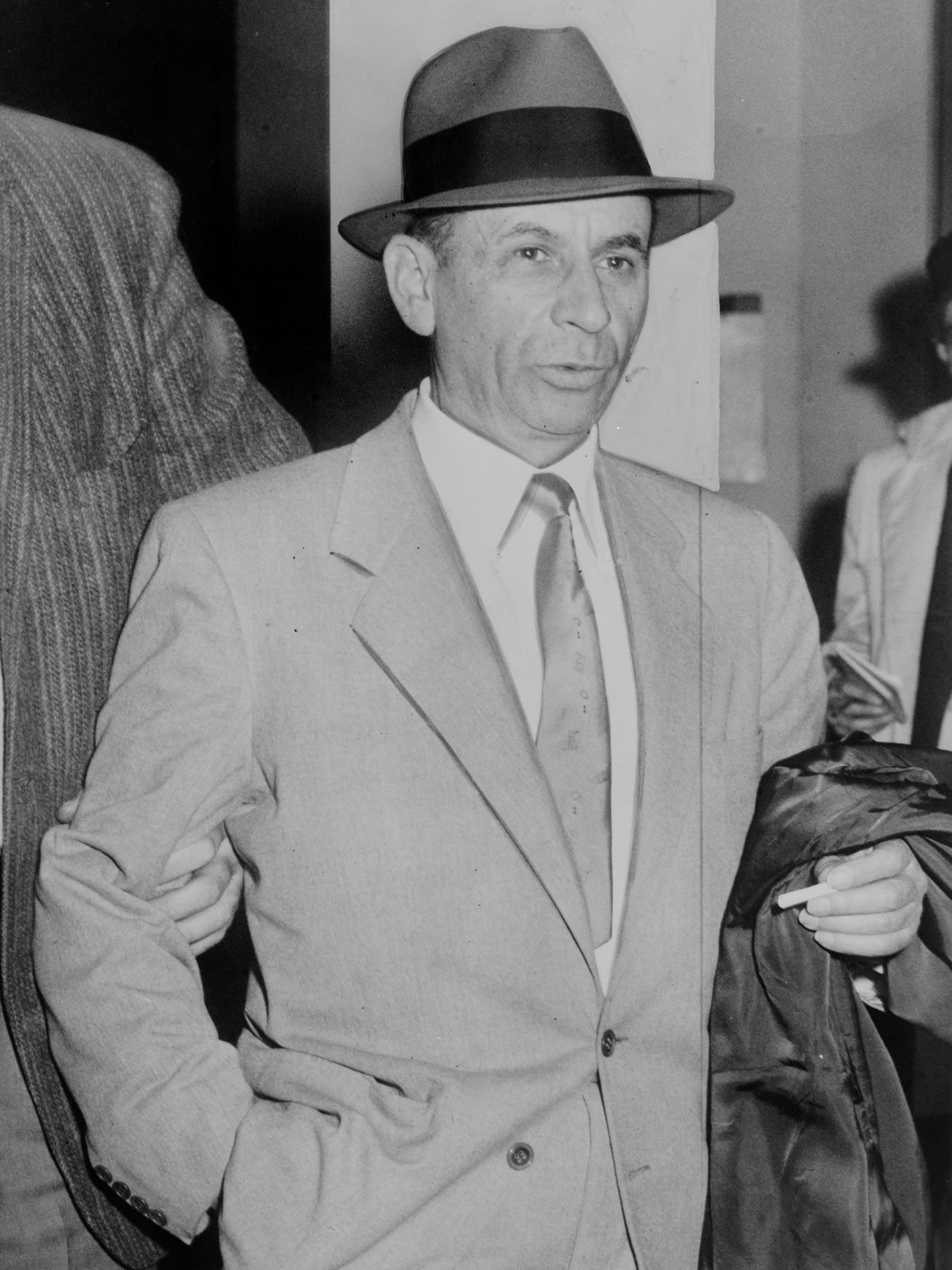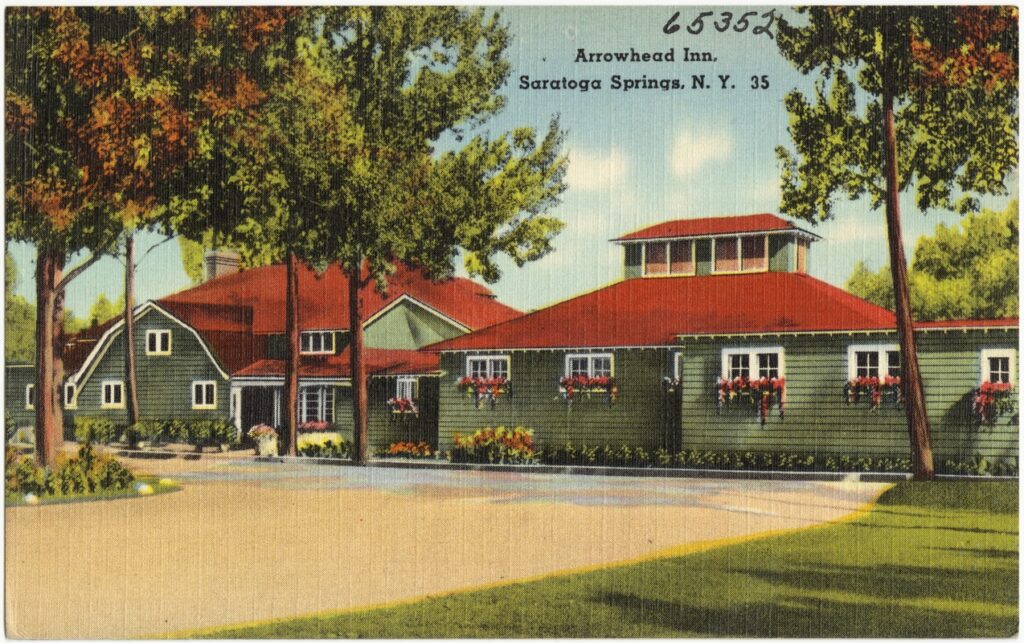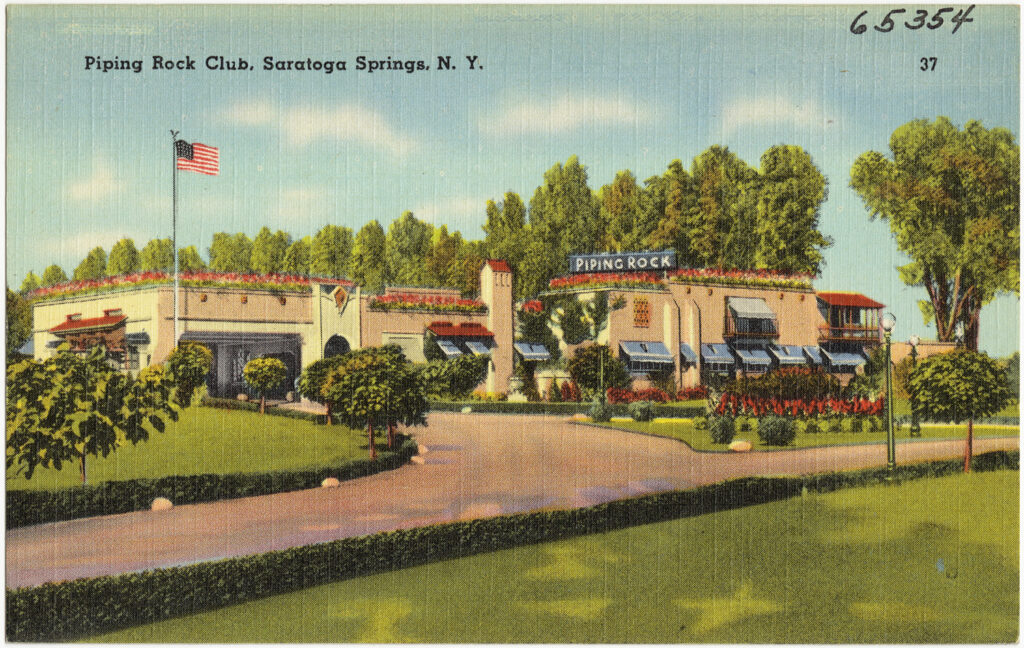Meyer Lansky’s 1953 jail stint
Seventy years ago, a Saratoga lake house gambling probe put the ‘Mob’s accountant’ in hot water

Seventy years ago, Meyer Lansky took a legal hit in an upstate New York gambling rackets crackdown that concluded with the first and only stint of jail time he ever served.
Sixteen months of inquiries conducted by a blue-ribbon grand jury led to sweeping indictments being handed down in late 1952, naming dozens of front men, several corporate entities and a few of the hidden string-pullers involved in illegal gambling enterprises in picturesque Saratoga Springs. Meyer Lansky, no stranger to law enforcement and police lineups, had managed until this time to avoid conviction for any major crime. As a result of the expansive investigation, however, his winning streak was officially broken in May 1953.
For years, the swanky establishments, colloquially known as “lake houses,” were well known for fine dining and top-notch entertainment. But after sundown, it was an open secret that the lake houses offered ample libations and games of chance. Some of the notable hot spots included Piping Rock, Riley’s, The Brook and the Arrowhead Inn.

Saratoga’s gambling underbelly traces back long before the underworld’s most infamous figures became involved. When Manhattan’s most notorious financier — Arnold Rothstein — began putting his money (and installing up-and-coming underlings) into the area during the 1920s, the racket became a well-oiled machine.
Investigative interest in the lake houses was probably inevitable and had even been predicted (by the news media) some years earlier, but fierce new attention came on the heels of the nationally televised Kefauver Committee’s investigation of organized crime, beginning in 1950. Lansky was one of many known and lesser-known mobsters called before the committee. He, like most of those facing hard questions, denied or refused to answer anything self incriminating. Nevertheless, the exposure certainly prompted then-New York Governor Thomas Dewey to take aim at the numerous rackets across the state, and in particular the gambling enterprises in Saratoga.

A special grand jury convened in late 1951 to examine illegal activities at the lake houses. In September 1952, a 52-page document listed alleged conspirators (most names were still under seal) and various lake houses. Lansky was one of seven indicted individuals charged with forgery, conspiracy and gambling in the operation of the Arrowhead Inn (which had been closed since 1947). The 21-count indictment asserted the Arrowhead was operated as an elaborate scheme, under the ownership of L & L Company, and essentially was a “front” for the ultimate purpose “to attract the maximum number of patrons of appropriate economic position who should be induced to proceed from the restaurant to the casino and there to engage in games of chance.”
Prosecutors publicly named Lansky and James “Piggy” Lynch, but kept the other names under seal until the individuals could be located and presumably apprehended. Lansky took the proactive route and came forward quickly. Accompanied by his attorney, Moses Polakoff, Lansky surrendered to New York State Police on September 10, 1952. He was arraigned later that afternoon in Ballston Spa and released on $10,000 bail. Most of the charges were misdemeanors, with the exception of a charge of third-degree forgery for feloniously obtaining signatures for a summer liquor license.
Lansky’s case was not the first, although it received the most press. When the Arrowhead indictment came to light, prosecutors had already issued 40 indictments related to other lake houses, stakeholders and complicit politicians.
Press coverage of the probe put extra flair into the headlines with frequent mentions of Lansky’s association with Lucky Luciano, Frank Costello and Joe Adonis. Interestingly, despite suspicions they too had financial interests in the Saratoga nightclubs at one time or another, none of those three was ever named in the indictments. Luciano was living in Italy, exiled since 1946. Costello was serving 18 months for contempt of Congress, and Adonis was being tried in New Jersey for unrelated gambling conspiracies.

The government’s Saratoga probe did, however, target another recognized Mob figure and co-owner of the Arrowhead Inn — Joseph “Doc” Stacher, who laid low in Las Vegas to buy some time and, some reports suggested, to avoid being tried with Lansky. Once unsealed, the indictment revealed Lansky, Stacher and John ‘Piggy’ Lynch as the owners of L & L, which owned the Arrowhead.
Lansky returned to court on February 19, 1953, where he pleaded guilty to five counts of gambling and conspiracy, all misdemeanors (the felony forgery charge was dropped). Others charged were Louis “Doc” Farone, Gerard and John King, Thomas O’Brien, Herman Weiner and George Brown (the latter two also pleaded guilty).
Then, on May 2, Justice Leo J. Haggerty of the state Supreme Court sentenced Lansky to three months behind bars (in the Saratoga County Jail) and $2,500 in fines ($500 for each count). The judge told the defendants they had 30 days to get their affairs in order.
Lansky’s prison stint in 1953 was an anomaly, even beyond the fact it was the only time served during his criminal career. The incarceration, and subsequent release, received little if any publicity, thus leaving that short period behind bars with a dose of mystery. A notation tucked within Lansky’s FBI file states the mobster was sentenced to 40 days, plus three years of probation, and that during incarceration, in July 1953, “he was also treated for a kidney infection in the Saratoga hospital.“
Robert Lacey’s 1991 Lansky biography Little Man tells of Lansky and co-defendant Gerard King having a pretty easygoing time in the jail, eating delivered meals and basically having the run of the cellblock. Lacey’s account also says Lansky chose to begin serving almost immediately after sentencing and was set free a month early “for good behavior.” According to a New York Daily News article from 2017, Lansky’s prison stay was even shorter than that. “He served 24 days,” the Daily News reported. A 1961 Bureau of Narcotics file notes, with a hint of uncertainty, “On or about July 21, 1953, Meyer Lansky was released.”
The other Saratoga trials continued throughout the year, eventually catching up with Lansky’s partner Doc Stacher. By September, Lansky had been a free man and allegedly making serious moves in Havana, but his legal woes from Saratoga weren’t quite over. The federal government levied a $238,791 tax lien and attempted to have him deported.
The lake house probe itself was an expensive affair and finally came to a presumed close in late December 1953 with a “mass sentencing” of 27 individuals. The sentences included $28,000 in total fines (a $10,000 fine for Doc Stacher alone). Special prosecutor Paul W. Williams announced, “I have cleaned up and closed every casino and gambling house in Saratoga County.” The total cost of the State’s probe was estimated at $500,000, and ultimately tallied 38 guilty verdicts of the 48 people indicted, and three of the six corporations. The county of Saratoga’s bill was $45,000, but it had already collected $20,000 in fines and expected to be in the black again with the fines from the mass sentencing.
Christian Cipollini is the author of Murder Inc.: Mysteries of the Mob’s Most Deadly Hit Squad and LUCKY, a gangster graphic novel.
Feedback or questions? Email blog@themobmuseum.org





